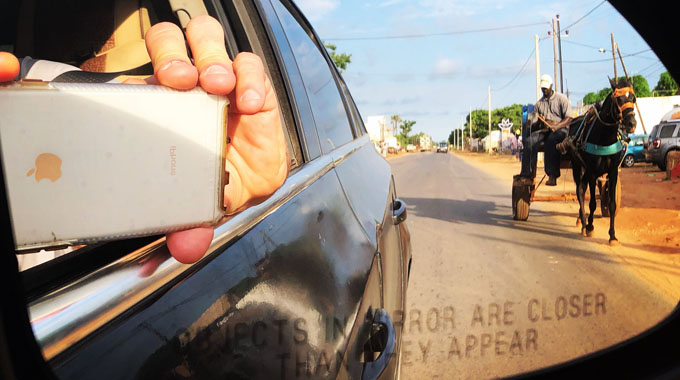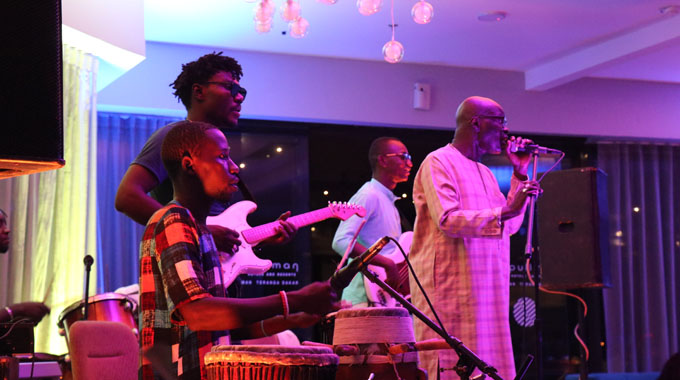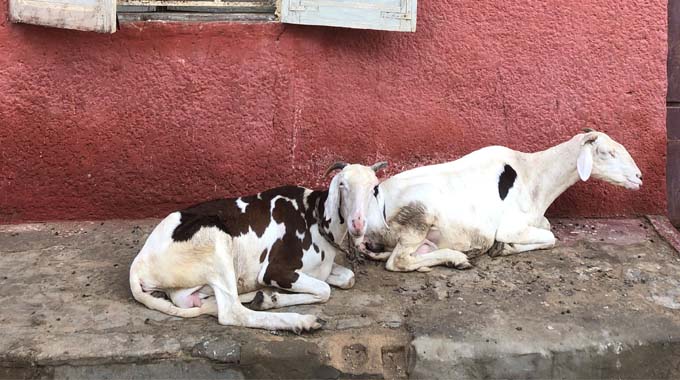Happily, I found Dakar to be buzzing with energy when I arrived. Across the sprawling metropolis of more than 3 million people, horse-drawn carts competed for space with taxis and minibuses. Markets overflowed with produce, fish, and other goods—much of which found its way into baskets balanced impressively atop women’s heads. Yet communicating was a challenge: Many locals I met spoke French and at least one indigenous tongue, but little English. And my rusty, rudimentary French was of little help. So I was relieved at midday to meet an English-speaking guide for lunch in the cosmopolitan coastal neighborhood of Almadies.
Over the national dish of rice and fish, Adja Kosse Faie told me just how central music is in Senegalese life. “You have music when you get up and when you go to bed,” she said. “You hear it everywhere.” She pulled out her phone and played YouTube videos of some of her favorite songs. And she raved about an older acoustic musician named Souleymane Faye: “He sings about friendships and life and love, and he sometimes uses proverbs in his songs,” she said. Not long after our conversation, she sent me a WhatsApp message (everyone I met, it seemed, used WhatsApp). As luck would have it, Faye was performing tonight. Would I like to go?
So that evening, we headed to a small restaurant-nightclub called Ubuntu in the upscale neighborhood of Ngor Virage. The club was nearly empty when we arrived at 9 p.m.—I was beginning to realize that nightlife in the capital doesn’t really start until about midnight. But as Adja and I chatted over dinner near framed photos of Michael Jordan and Che Guevara, people trickled in, and by the time Faye took the stage hours later, the place was hopping. The singer wore a bright vest and cap, and a long silver necklace. Accompanied by a bass player and a dreadlocked drummer on the traditional Senegalese sabar, Faye strummed a jangly electric guitar and sang in Wolof. The result was a kind of hypnotic folk rock, with Faye’s resonant voice reminding me of Marvin Gaye one moment and Van Morrison the next. After the show ended around 2 a.m., Adja and I chatted with the gregarious musician, who wistfully recalled playing years ago in New York City. In fact, Faye is one of many local stars whose music has found an enthusiastic audience overseas.
Whether or not they’re aware of it, many Americans have heard Senegalese superstar Baaba Maal. Blessed with a golden voice, Maal has not only recorded and toured with British folk rockers Mumford and Sons, but he also sang in his native Pulaar on the Oscar-winning soundtrack to the 2018 hit Marvel movie Black Panther. A member of the Fulani tribe, one of West Africa’s largest ethnic groups, Maal grew up in northern Senegal in the 1950s and ’60s surrounded by music. “Our country was coming into independence,” he once said, “was opening to the rest of the world, and it was easy to see where the connection was between the traditional music we were doing and the opportunities the rest of the world was giving us.” The confluence of politics and globalization would prove to be a powerful catalyst. Both Maal and N’Dour would become global stars, but neither forgot about home. N’Dour later opened a nightclub and launched a TV network in Dakar. And from 2012 to 2013, after attempting a run for the presidency, he served as Senegal’s minister of tourism, culture, and leisure.
The more time I spent in Dakar, the more I realized just how right Adja had been: Music really was everywhere—good music, too. One evening, as a warm breeze blew off the Atlantic and the sun began to set, I relaxed by the swimming pool at the Radisson Blu hotel and watched a trio set up: a saxophonist, a drummer, and a musician with a kora—the round-bodied West African harp with 21 strings. I didn’t expect much; I’ve rarely been bowled over by poolside musicians. But as the sky turned a burnt peach and the lights of Dakar flickered on, I watched in awe as the group launched into a gorgeous, sometimes haunting set. The kora player sang in Wolof, his stirring voice rising and falling over the gentle drums, and the saxophonist riffed at just the right moments.
Such acoustic music is often played around Senegal, but the most popular style, by far, is mbalax, a high-energy fusion of influences, from Senegalese and Cuban rhythms to soul, rock, and Congolese rumba. Much of Senegal’s music has its roots in the country’s centuries-old ethnic traditions, including mbalax, which exploded in the 1970s with the rise of groups such as Etoile de Dakar, which featured N’Dour, and Super Diamono, starring Pene. To this day, mbalax groups generally include keyboardists, drummers, electric guitarists, and a singer. In recent decades, Senegalese music has continued to evolve, with younger artists blending traditional styles with rap and hip-hop.








